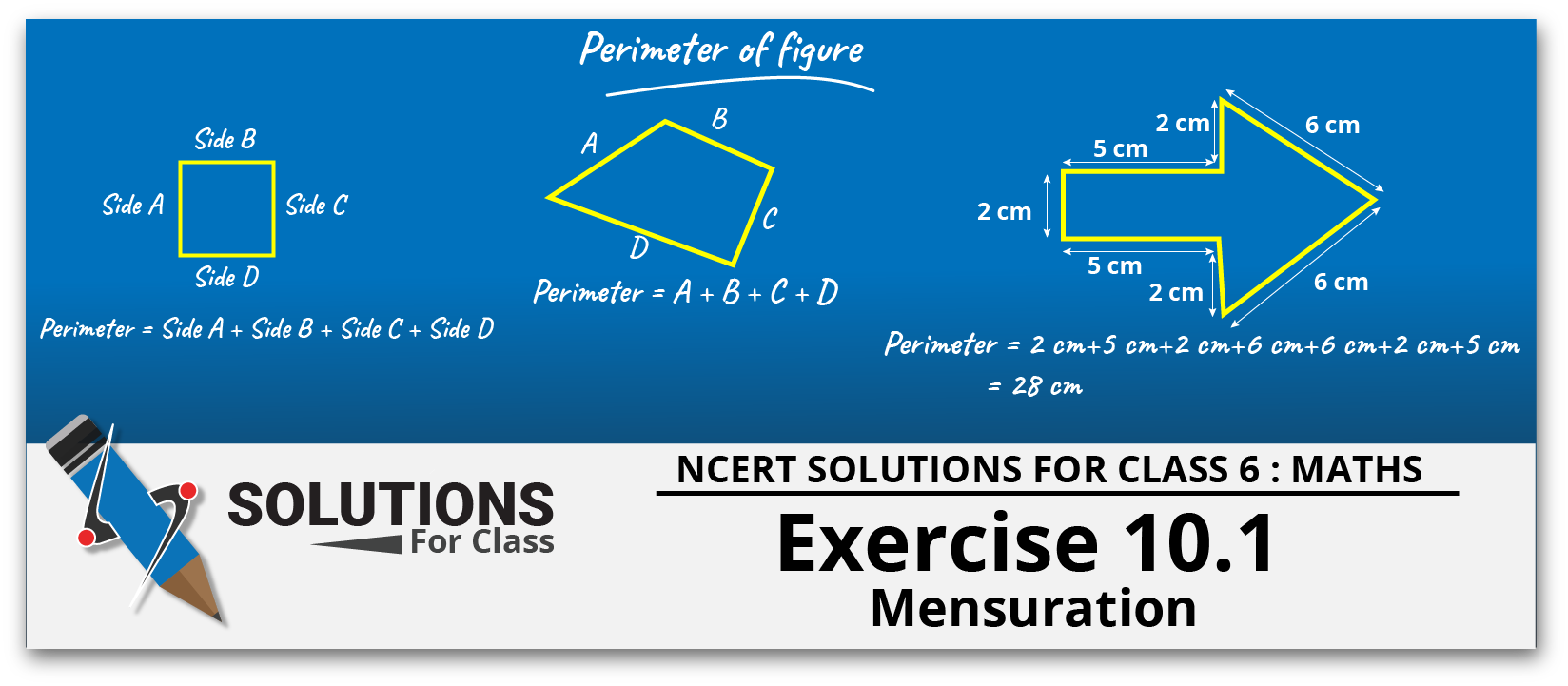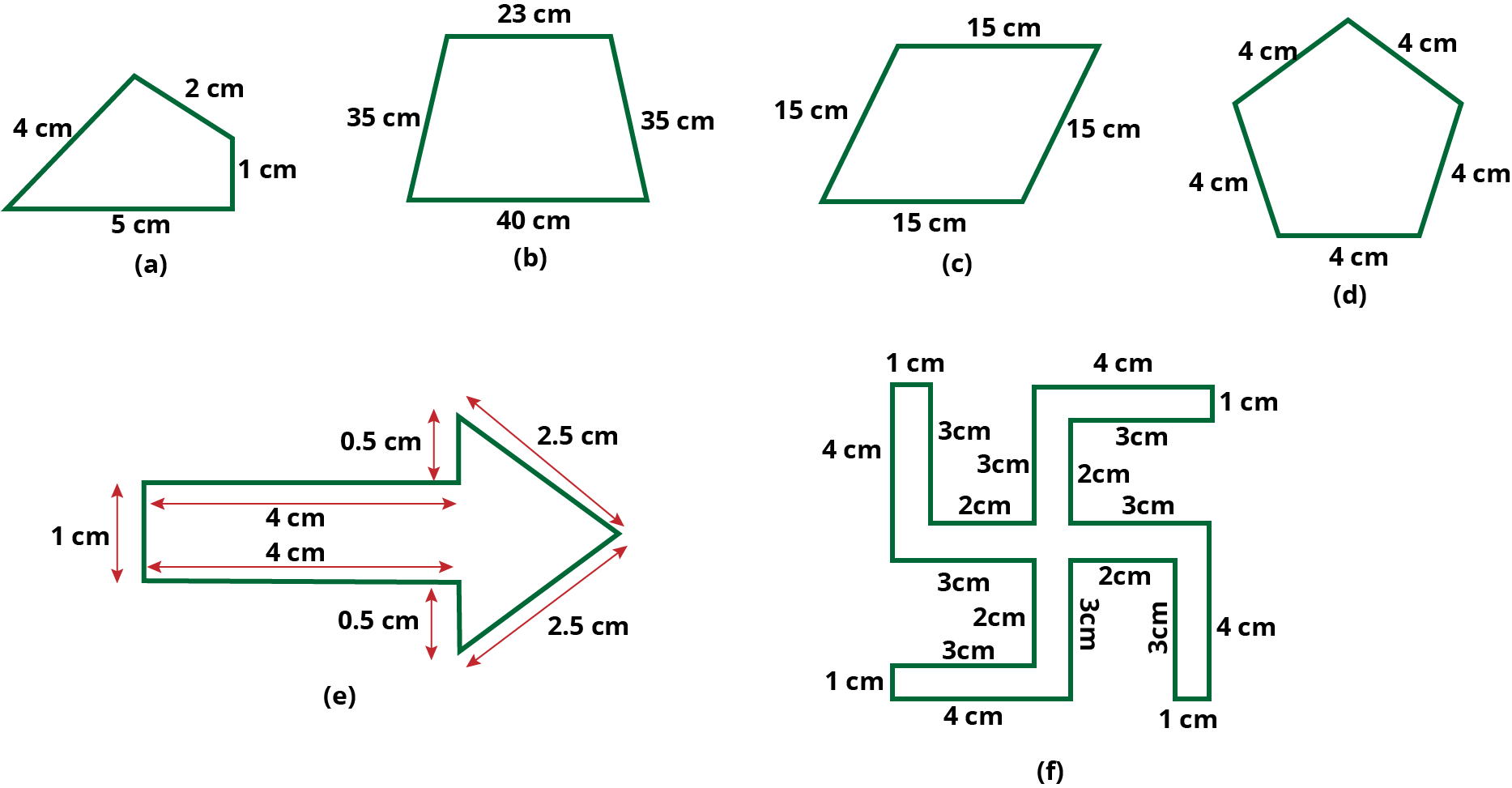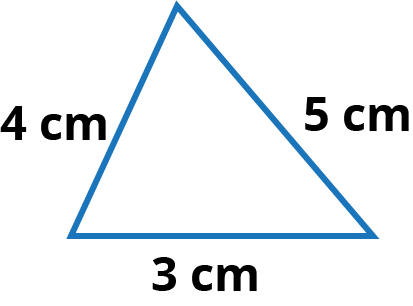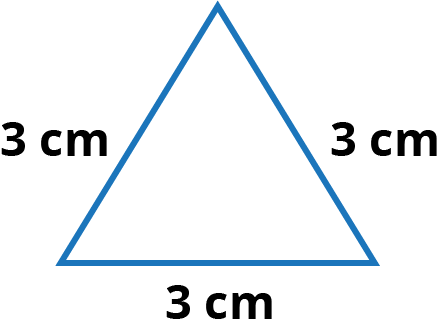
Table of Contents
ToggleNCERT Solutions for class 6, Maths chapter 10, Mensuration involves study of regions and their boundaries. Exercise 10.1 class 6, Mensuration is all about study of perimeter of different shapes. in Exercise 10.1, we are given different shapes with their measurements. students can easily calculate the required perimeter. CBSE Class 6 maths chapter 10, exercise 10.1 has total 17 question which is given below.
Mensuration, Exercise 10.1
Q.1. Find the perimeter of each of the following figures:

Ans:
(a) Perimeter = Sum of all the sides
= 4 cm + 2 cm + 1 cm + 5 cm = 12 cm
(b) Perimeter = Sum of all the sides
= 23 cm + 35 cm + 40 cm + 35 cm = 133 cm
(c) Perimeter = Sum of all the sides
= 15 cm +15cm +15 cm +15 cm = 60 cm
(d) Perimeter = Sum of all the sides
= 4 cm + 4 cm + 4 cm + 4 cm + 4 cm = 20 cm
(e) Perimeter = Sum of all the sides
=1cm + 4 cm + 0.5 cm + 2.5 cm + 2.5 cm + 0.5 cm + 4 cm = 15 cm
(f) Perimeter = Sum of all the sides
= 4 cm +1 cm + 3 cm + 2 cm + 3 cm + 4 cm + 1 cm + 3 cm + 2 cm + 3 cm + 4 cm + 1cm + 3 cm + 2 cm + 3 cm + 4 cm + 1 cm + 3 cm + 2 cm + 3 cm = 52 cm
Q.2. The lid of a rectangular box of sides 40 cm by 10 cm is sealed all round with tape. What is the length of the tape required?
Ans:

Q.3. A table-top measures 2 m 25 cm by 1 m 50 cm. What is the perimeter of the table-top?
Ans:

Q.4. What is the length of the wooden strip required to frame a photograph of length and breadth 32 cm and 21 cm respectively?
Ans:

Q.5. A rectangular piece of land measures 0.7 km by 0.5 km. Each side is to be fenced with 4 rows of wires. What is the length of the wire needed?
Ans:

Q.6. Find the perimeter of each of the following shapes :
(a) A triangle of sides 3 cm, 4 cm and 5 cm.
(b)An equilateral triangle of side 9 cm.
(c) An isosceles triangle with equal sides 8 cm each and third side 6 cm.
Ans:
(a) A triangle of sides 3 cm, 4 cm and 5 cm.

Perimeter of triangle = Sum of all three sides
= 3 + 4 + 5 = 12 cm
(b) An equilateral triangle of side 9 cm.

Perimeter of an equilateral triangle = 3 x (Length of a side)
= (3 x 9) cm = 27 cm
(c) An isosceles triangle with equal sides 8 cm each and third side 6 cm.

Perimeter of isosceles triangle = Sum of all three sides
= 8 + 8 + 6 = 22 cm
Q.7. Find the perimeter of a triangle with sides measuring 10 cm, 14 cm and 15 cm.
Ans:

Q.8. Find the perimeter of a regular hexagon with each side measuring 8 m.
Ans:

Q.9. Find the side of the square whose perimeter is 20 m.
Ans:

Q.10. The perimeter of a regular pentagon is 100 cm. How long is its each side?
Ans: Perimeter of regular pentagon = 5 x side
⟹ 100 cm = 5 x side
⟹ Side = 100÷5
⟹ Side = 20 cm
Therefore, side of the pentagon is 20 cm.
Q.11. A piece of string is 30 cm long. What will be the length of each side if the string is used to form?
(a) a square? (b) an equilateral triangle? (c) a regular hexagon?
Ans: Length of string = Perimeter of each figure
(a) Perimeter of square = 30 cm
⟹ 4 x side = 30
⟹ Side = 30 ÷ 4
⟹ Side = 7.5 cm
Therefore, the length of each side of square is 7.5 cm.
(b) Perimeter of an equilateral triangle = 30 cm
⟹ 3 x side = 30
⟹ Side = 30÷3
⟹ Side = 10 cm
Therefore, the length of each side of equilateral triangle is 10 cm.
(c) Perimeter of a regular hexagon = 30 cm
⟹ 6 x side = 30
⟹ Side = 30÷6
⟹ Side = 5 cm
Therefore, the length of each side of hexagon is 5 cm.
Q.12. Two sides of a triangle are 12 cm and 14 cm. The perimeter of the triangle is 36 cm. What is its third side?
Ans: Let the length of third side of triangle = x cm
We know that, Perimeter of triangle = Sum of all sides
⟹ 36 cm = 12 cm + 14 cm + x cm
⟹ 36 = 12 + 14 + x
⟹ 26 + x = 36
⟹ x = 36 – 26
⟹ x = 10 cm
Therefore, the length of the third side is 10 cm.
Q.13. Find the cost of fencing a square park of side 250 m at the rate of ₹ 20 per metre.
Ans: Given, Side of square = 250 m
Perimeter of square = 4 x side
= 4 x 250 m
= 1000 m
Since, cost of fencing of per meter = ₹ 20
Therefore, Cost of fencing for 1000 m = ₹ 20 x 1000 = ₹ 20,000
Q.14. Find the cost of fencing a rectangular park of length 175 m and breadth 125 m at the rate of ₹12 per metre.
Ans: Length of a rectangular park = 175 cm
Breadth of a rectangular park = 125 m
Perimeter of rectangular park = 2 x (Length + Breadth)
= 2 x (175 + 125) m
= 2 x 300 m
= 600 m
Since, the cost of fencing per meter = ₹12
Therefore, the cost of fencing of 600 m = ₹ 12 x 600 = ₹ 7,200
Q.15. Sweety runs around a square park of side 75 m. Bulbul runs around a rectangular park with length 60 m and breadth 45 m. Who covers less distance?
Ans: Here, distance covered by Sweety is equal to perimeter of square park.
Perimeter of square = 4 x side
= 4 x 75 m
= 300 m
Thus, Distance covered by Sweety is 300 m
Also, distance covered by Bulbul is equal to perimeter of rectangle park.
Perimeter of rectangle = 2 x (Length + Breadth)
= 2 (60 + 45)
= 2 x 105
= 210 m
Thus, distance covered by Bulbul is 210 m
Hence, Bulbul covers less distance than Sweety.
Q.16. What is the perimeter of each of the following figures? What do you infer from the answers?

Ans:
(a) Perimeter of square = 4 x side = 4 x 25 = 100 cm
(b) Perimeter of rectangle =2 x (Length + Breadth) = 2 x (40+10) = 2 x 50 = 100 cm
(c) Perimeter of rectangle = 2 x (Length + Breadth) = 2 x (30 + 20) = 2 x(50) = 100 cm
(d) Perimeter of triangle = sum all sides = 30 + 30 + 40 = 100 cm
Therefore, all the figures have same perimeter
Q.17. Avneet buys 9 square paving slabs, each with a side of ½ m. He lays them in the form of a square.

(a) What is the perimeter of his arrangement in figure (i)?
(b) Shari does not like his arrangement. She gets him to lay them out like a cross. What is the perimeter of her arrangement in figure (ii)?
(c) Which has greater perimeter?
(d) Avneet wonders if there is a way of getting an even greater perimeter. Can you find a way of doing this? (The paving slabs must meet along complete edges i.e. they cannot be broken.)
Ans:
(a) Side of one squared slab = 1/2 m

Now, Side of 3 squared slab = 3x(1/2) = 3/2 m
∴ Perimeter of Square = 4 x (Side)
= 4 x (3/2) = (2×3) = 6 m
(b) Perimeter of cross = 1/2 +1+1+1/2+1+1+1/2+1+1+1/2+1+1 = 10 m

(c) The arrangement in the form of cross has greater perimeter.
(d) Perimeters greater than 10 m cannot be determined.

